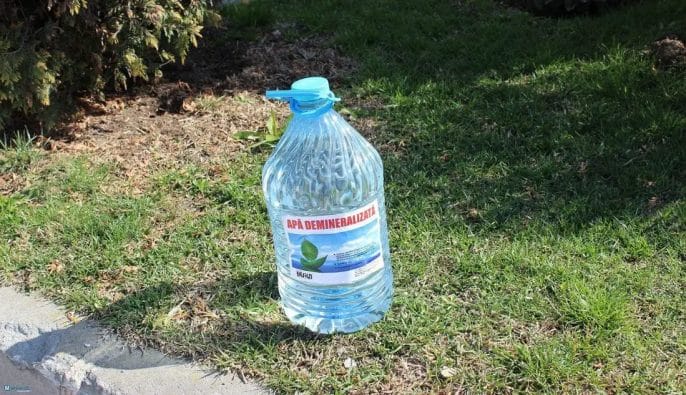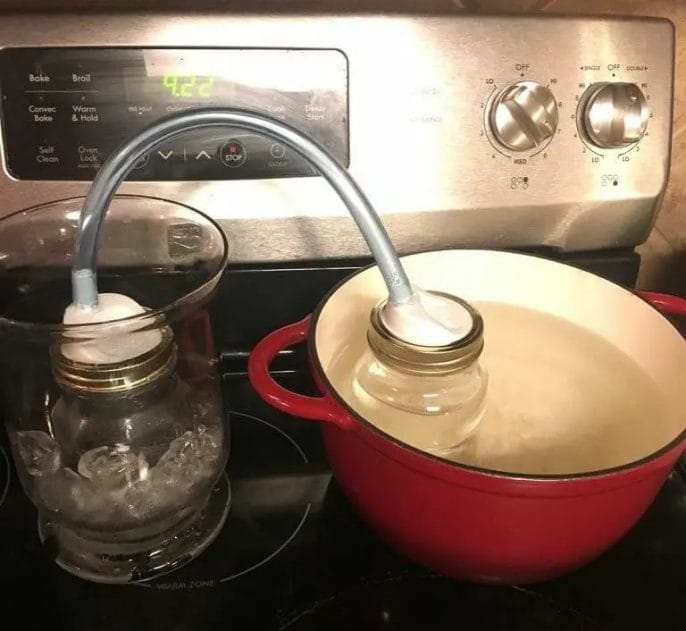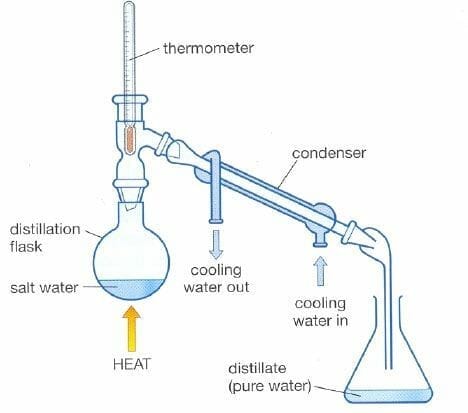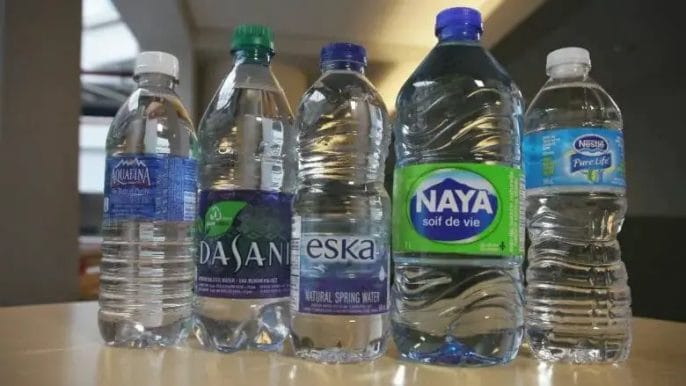Demineralized water has been around, and many people are using it for different purposes. It is used for scientific and industrial purposes, and once in a while, you will come in contact with demineralized water. However, if you don’t know how to make demineralized water, this article will provide perfect answers to your questions.
What Is Demineralized Water?

Demineralized water is water in its purified form. It is purified in such a way that 99% of soluble salts and mineral ions are removed. It is water that doesn’t have any ions or minerals in it because it has undergone several filtration processes to remove them. Demineralized water is also known as deionized or demi water.
How to Make Demineralized Water
Deionized water is made using any of the following processes:
- Ion exchange (anion and cation exchange) – Here, hydrogen ions and hydroxide ions replace the positive ions and negative ions.
- Electrodeionization – This process works by passing an electric current through the resins to keep them regenerated. During this process, the unwanted ions are pushed away from the reaction surface to the electrodes.
- Membrane filtration technique – It is the easiest of the three and needs no chemical to remove the minerals to produce demineralized water.
These water purification processes completely demineralize the water, keeping it free from mineral salts.To make demineralized water, you will need some machines and a treatment plant, which is tedious. However, you can make something close to demineralized water, which is distilled water.Making distilled water is easy to do. The best thing about it is that you can even make it at home, and there are three different ways to make it:
Distill Tap Water with a Glass Bowl

What You Need
- Stainless steel pot
- Glass bowl
- A rack
- Some ice
- The heat from a stove
- Bottle
Steps
- Get a stainless steel pot of about 18 liters and fill it halfway with tap water. Put a glass bowl in the pot, and make sure it stays afloat. If the bowl doesn’t stay afloat, remove it from the pot and place a rack to settle at the bottom of the pot. Then place the bowl back in the pot.
- Set the pot on fire and allow the water to boil. The reason for doing this is to boil off chemicals from the water.
- The next step is to create a condensation effect. You can create this by turning the pot’s lid upside down and filling the top with ice. When the steam from the pot hits the lid, it will generate a condensation effect. As the water in the pot continues to boil, the steam will rise and condense on the lid. Continue the process until you have enough distilled water in the bowl.
- Observe the water collecting in the bowl. If it is boiling, turn down the heat on the stove a little. The water is not meant to boil, but to be hot. After a few minutes, remove the pot from the heat and take off the pot’s lid.
- Take the bowl out of the pot gently. Be cautious while doing this because the bowl will be hot. Alternatively, you can allow the bowl to cool before removing it from the pot of water. After you must have allowed the bowl to cool, pour the water into a bottle and store it properly.
Distill Tap Water with Glass Bottles

This step uses glass bottles to make distilled water. What You Need
- Two bottles
- Stainless steel pot
- Ice pack
- Heat
Steps
- Get two glass bottles, with one of the bottles having an outward curve from the neck. This is to prevent the distilled water from transferring into the other bottle.
- Fill one of the bottles with tap water. You don’t have to fill the bottle. After that, join the two bottles at the neck region and secure them with duct tape.
- Put the bottle with an uncurved tip inside a stainless steel pot. Make sure the pot is large enough to contain the amount of water that will completely cover the bottle. Then allow to boil.
- While boiling, tilt the bottle in the boiling pot at a 30-degree angle, allowing the top of the empty bottle to lean against the pot. This angle collects distilled water quickly.
- Place an ice pack on top of the bottle with a curved tip. This will cause the evaporated water from the pot to condense into the cooler bottle. Continue with the process until you have collected the required distilled water.
Convert Rainwater to Drinking Water

This is another process, though not universal, that you can employ to make distilled water.What You Need
- Large Container
- Clean bottles
Steps
- Place a large container outside to collect the rainwater.
- Leave the container outside for about two days. This is to allow the mineral elements to settle at the bottom.
- Pour the distilled water in clean bottles, jugs, or small containers to store them.
Oxidizing Filters
Oxidizing filters (or backflushing filters) are used to remove iron from water and are less expensive than distillation or deionization. This filter exposes iron to a filtering medium that’s coated with an oxidizing agent (manganese dioxide, Birm, manufactured zeolite, Filox, or plastic resin beads ). The coating then reacts with iron to form solid particles that are sieged within the filters.
When the iron is exposed to manganese dioxide, it becomes trapped and can be filtered out. These filters are very effective for removing minerals like iron. However, they do not give completely demineralized water.
Most backflushing filters can remove up to 8mg/liter iron every several weeks, and can eliminate 75-90% of iron. Should the iron concentration not reduce significantly, we recommend that you follow up this process with water softening.
Water Softeners
Water softeners usually contain two tanks; the larger tank and a smaller one. The larger tank usually contains the salt while the smaller one holds the ion exchange resin.
Water softening removes the precipitation and build-up of hard water minerals in equipment, RV water heater, and piping. Removing these hard water minerals improves the taste of your water, and also helps eliminate odors. However, even after this process, there are still some minerals left in your water, as water softeners do not remove all the minerals from water.
A water softener typically removes 95-99% of the hard water minerals present in the water and replaces them with the sodium ion. It works based on a process called ion exchange, making use of a plastic material known as ion exchange resin.
The porous resin has a large surface area that contains numerous exchange sites. These exchange sites have a high affinity for calcium, magnesium, dissolved iron, or copper. Hence, they trap them from hard water.
To do this, the active sites must exchange these ions for a less tightly held ion (usually sodium ions). Although this doesn’t readily take place, sodium ions can be passed on to the exchange sites by prolonged exposure to a high concentration of sodium chloride.
According to the Water Quality Association, the water softening process (ion exchange) adds sodium ions at the rate of 8 mg/liter for every 17ppm of CaCO3 removed per gallon of water.
What Is the Difference Between Distilled and Demineralized Water?
Distillation and demineralization are two processes that you can use to purify water. However, they operate differently and produce different results.
Distillation is the process of heating water above the boiling point. The steam is collected and cooled afterward to produce liquid. That liquid becomes distilled water. Distillation removes bacteria, minerals, salts, particles, etc. from water during this process. Once the water has been distilled, you must store it in a sterilized container to preserve its purity.

This method is prevalent, effective, and the easiest to use. However, its application is somewhat limited, and the quality of water in terms of the absence of minerals is incomparable to that of demineralized water.
Therefore, the difference between demineralized water and distilled water is in the amount of minerals present. Demineralized water is usually freer of soluble minerals than distilled water and would remove elements that would make their way through distillation. There are some organic compounds and gases that pass through the distillation process.
The only issue with demineralized water is that it has more bacteria and viruses than distilled water. In other words, demineralization is not as effective as distillation when it comes to removing bacteria and viruses.
Due to these reasons, many manufacturers use both the demineralization and distillation processes to purify the water. Demineralization will remove the elements and soluble minerals better, while the distillation process will more effectively handle the bacteria and viruses.
What Is Demineralized Water Used for?

As we stated earlier, demineralized water is used for various industrial and scientific purposes. Below are the common uses of demineralized water.
- It is used for automotive purposes. It is found in batteries and cooling systems.
- They are used in the manufacturing of pharmaceuticals and cosmetic products.
- Used in the production of fire extinguishers.
- They are used in steam irons.
- Demineralized water is used in the power industry as broiler feed water and for steam generation.
- Demineralized water is used to sanitize equipment and containers in many industries.
- It is also used in the food and beverage industry to remove organic materials, viruses, and bacteria from food.
- Demineralized water can also be used in the labs to make various solutions.
- It is used to manufacture computer chips.
Why is Demineralized Water Not Suitable for Consumption?

Since demineralized water is devoid of minerals that are bad for human health, one would think it’s safe to drink. However, it is not. In fact, demineralized water, when taken takes away the essential minerals in our body, jeopardizing our health system. As such, it is not suitable for consumption at all.
Is Demineralized Water Safe for Drinking Water?
As demineralized water is produced by distillation and Reverse Osmosis is also near to pure water, molecular H20 as possible. Most of medical professionals agree that it is naturally healthy and its merits are greater than the demerits.
The interesting matter is that new drinking water regulations are centered around ensuring pure drinking water by eliminating harmful contaminants. There is no surety that the water we drink has important minerals for our health. Historically industries are trying their best to produce pure drinking water by using different methods of purification.

We know some important points for our lives, , Among these points one is more does not mean better. Many famous organizations and experts especially WHO are giving more importance on leaving usually occurring minerals within our drinking water.
An expert FrantišekKožíšek, M.D., Ph.D. along with polish National Institute of Public Health. Dr. Kožíšek’s reports health significance of Drinking water Magnesium and Calcium is the most eye opening and through the discussion on safe drinking water and minerals water published to date.
Our bodies are evolved over thousand years of drinking a lot of dissolved minerals. Most of them act a vital role in our overall health. Some of which are just we understand now. Distillation and Reverse osmosis strip away these naturally occurring minerals ., By making a highly aggressive and unstable form of water which has been proven to have a negative effect on our health for different varieties of reasons.
Where to buy demineralized water
Very recently water softener produces distilled water up to pH value about seven but will be affected by the presence of carbon dioxide. It may reach a little acidic pH value with couples of hours. Moreover, this is an important matter to refer that he pH of ultra-pure water is stuff to measure.
Making Your Demineralized Water vs. Buying Ready to Use: Which Is Better?
Generally, many people would opt to buy ready-to-use demineralized water instead of making theirs. That’s because they would always factor the stress of making demineralized water on their own plus the time it would take to make it. However, what they don’t know is that ready-to-use demineralized water is not always the best, and here is why.

Demineralized water may go out-of-date, and it often loses its quality if left in the plastic bottle or jerrycan for an extended period. Using such demineralized water could cause damages to your appliances and other surfaces.
Also, buying ready-to-use demineralized water would cost you more than making them yourself.
Since you never can tell how long the demineralized water has been in the bottle or jerrycan, you need to be careful while buying.
Therefore, it’s better to make your demineralized water. It’s safe, saves you money, and also provide you with fresh and high-quality demineralized water.
In addition, you can make the exact quantity of demineralized water that you need.
What Is the Normal pH of Demineralized Water?
Just like regular water, fresh demineralized water has a pH of 7.0. If you expose it to the atmosphere for a long time, it will dissolve carbon dioxide in the air. In that case, the water will have a pH of 6 or 6.5, which is slightly acidic.
Conclusion
Demineralization is a purification process that leaves you with clean and pure water. Demineralized water is free from mineral ions and is essential in all industries and laboratories for various purposes.
Since you now know how to make demineralized water, making the desired quantity demineralized water would not be a problem. The steps in making distilled and demineralized water are quite similar, except for a few differences.
Still planning on buying demineralized water? You should make it for yourself instead.
Sarah J. Gregory
352 Hershell Hollow Road
Anaheim, CA 92805






